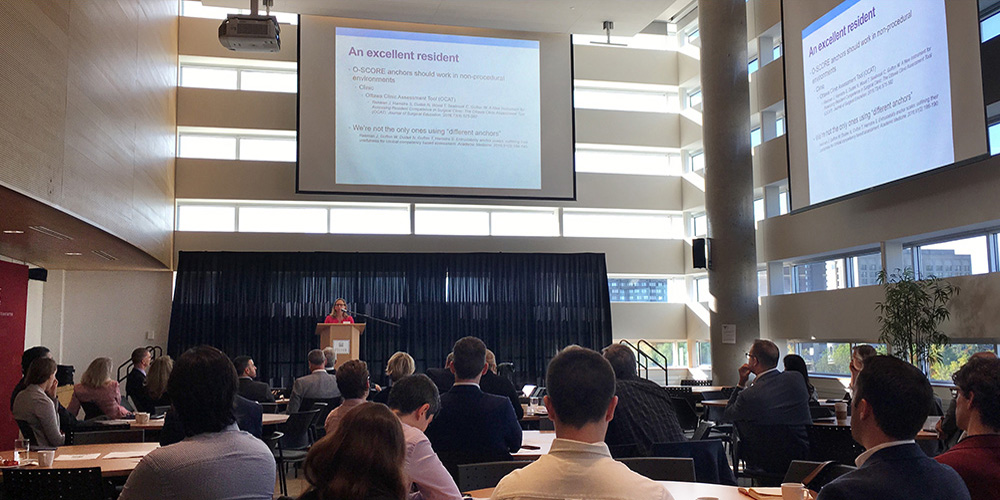Last week saw the inaugural meeting of the Canadian Conference for the Advancement of Surgical Education (C-CASE) at the University of Ottawa. C-CASE was launched to provide a platform of discussion for surgical education and opportunities for surgical and medical educators to network, share their knowledge, experiences and current research.
TVASurg team member Paul Kelly was in attendance to share some of the recent developments at TVASurg aiming to implement photogrammetry and VR into our surgical teaching repertoire.

A major theme of this conference was systems and tools used for evaluation and assessment, mostly in terms of competency but also for quality of educational resources and approaches. Some of the video projects included 5-minute medicine-style self-study videos for surgical clerkship by Elysia Grose of McMaster, found at surgicaleducationportal.com and evaluation of an unpublished cardiac surgery video library from Linda Yi Ning Fei of University of Ottawa. The later study yielded some valuable findings of medical students preferences for videos, such as an interest in rare procedures.
Traditional hands-on training is still a good option for surgical skill development such as stitching workshops through GICUM.com(Groupe d’intérêt en chirurgie de l’Université de Montréal). Turns out we weren’t the only presentation exploring the educational benefits of photogrammetry, as was shown in Ge Shi’s presentation of using AR and 3D models at the UBC “HIVE”, or Hackspace for Immersive Virtual Experiences. Peter Lapner from PrecisionOS also demonstrated immersive VR training simulations for orthopaedic surgery.
These are just a few of the many fantastic presentations, to learn more please visit the C-CASE website and check out the program abstracts. We'll look forward to checking this out again next year!
